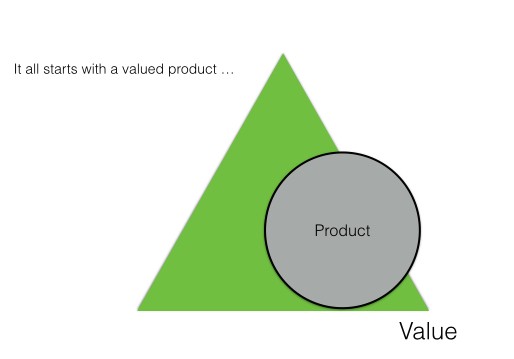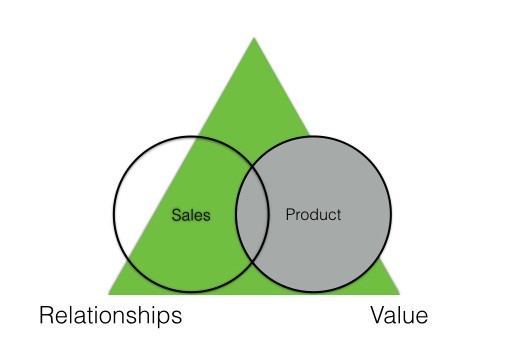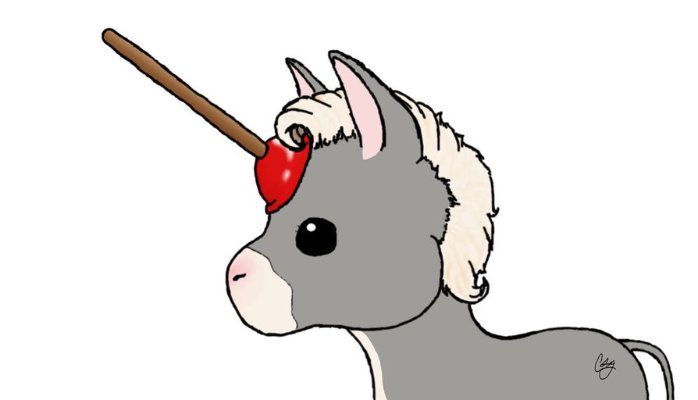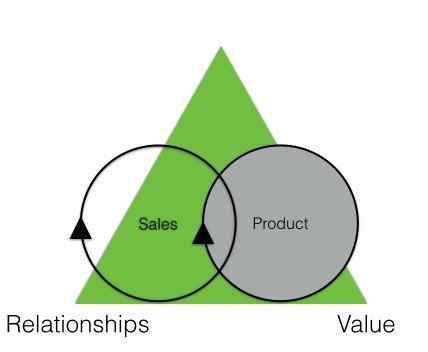Finding unicorns, and how to build a ‘$1BILLION’ business … in two easy steps
In the search for the next $1Billion business idea human nature is to think BIG, as $1Billion is a big number. Yet, the most likely idea is actually small, and seemingly too simple, solving an inherent problem or just making the complex easier.
Airbnb founded in 2008 is now valued at $25Bn (USD). Twitter is valued at $30B (started 2006) and Facebook $223B (2004). Founded in 2009 Uber now has a valuation of $51B. Snapcat is valued at $16B (kicked off 2012), and Eventbrite is valued at $1B (2006). (More via 1 and 2).
Every entrepreneur dreams of building the next $1Billion business. Alas, they are seemingly as rare as unicorns.
Yet, after decades of consumer research and helping businesses big and small in the hunt for their own $1Billion idea, I have discovered the secret.
So, drum roll, here are my two steps to building a $1Billion business …
- You will need a product (or service) a large number need or want.
- You will need to sell $1Billion of this product.
Two simple steps to solving one the enigma’s of an entrepeneur’s mind.
Please allow me to unpack this.
Step 1. The product
Your product will solve an unresolved problem or an unmet need or want. The product will overcome a frustration or make life tangibly easier.
It is critical that the product offers good ‘value’ and this is clearly articulated to potential customers. This may be a cheaper price to alternatives. However, this can be risky and tricky. Cheaper generally comes with leaner margins and a need for high volume while maintaining fundamental quality, experience and reputation imperatives.
More likely it is a higher level illustration of value via improved price bundling, an enhanced experience, higher quality and a superior reputation.

Value comes from …
- Price per unit compared with competitors (ideally you have none), price of the bundle of products you are selling and/or the ability to rationalise the price of your product against alternatives or what customers think is ‘good value.’
- Experience is everything! Maximise the ease of purchase and enjoyment of planning, purchase and minimising the blockages and frustrations. Please no frustrations, and if there are, deal with them fast. And, make the experience easy to share with friends and family. Let your customers share the wonderful experience with those they love.
- Quality is clearly illustrated as superior to alternatives. You may believe your product quality ROCKS, but if others do not know or think it RUBBISH … Oh man! Clear articulation of quality is key.
- Reputation is strong and there is positive word-of-mouth, on-line and off-line. A poor product has a poor reputation. A good product hopefully has a good reputation. Everyone loves a good rep, a rep worth protecting.
Step 2. Selling the product
You now need to sell your product, $1Billion worth. Selling is about ‘relationships.’ A relationship customers can trust. An easy relationship.
But first, how can you most efficiently ensure a very large number of people know your product exists? And, from this you will need to intrigue a large number of potential customers to allow you to demonstrate value, efficiently generate leads and convert as many of these as possible to sales. You will then need to ignite positive word-of-mouth and ongoing sales from customers, lots and lots of customers.
How to build relationships …
- Visibility of the product needs to be high, top of mind and omnipresent. Visible to a very large number of people and they are reminded the product exists frequently and ideally on-going.
- Demonstration of the clear value proposition of the product to a large number of intrigued potential customers is important. Capture the curious, and establish a desire to buy. Tempt them, target them and give them a compelling reason to be a customer.
- Usage once, twice, frequently and ongoing is vital. Make the purchase easy. Available everywhere, one click, no excuses. Be a critical part of the customers’ lives.
- Advocacy from users to friends, family et cetera. Leverage the customers’ willingness to tell others, make it easy to share their story. Make the customer own your story, and be willing to help your product to prosper.
Agility is critical
Do not get bogged down seeking the ‘perfect’ product before launching. Perfection is often an excuse for procrastination, and procrastination can slow getting a product that is ‘good enough’ started.
However, essential in building a $1Billion business is a commitment to agility in refinement and continuous improvement of the product and how it is sold.
Agility is about thinking strategically. However, ‘WARNING’ thinking strategically is rarely agile. Traditional strategic thinking without agility takes too long to get to action, is risk adverse and has other impediments to growth. Agility is about ever and authentically listening to customers and fixing what needs to be fixed quickly and efficiently towards clear goals.
Tech businesses are often great examples of agile strategy. Updates to the platform occur behind the scenes and are released with speed and responsiveness. Where bricks and mortar businesses would have needed to remodel and re-engineer to resolve issues, and potentially years later nothing has fundamentally changed. No wonder customers leave.
The self-selling product
Critical, is the intersection between the product and the selling— the advocacy hotspot. This is where happy customers share positive word-of-mouth and product reputation is nurtured.

Your product should be able sell itself. Happy customers buy again, and again, and encourage others to buy, who buy again, and again. If your product cannot sell itself, you have a really big problem. Ensuring that the selling of the product allows customers to in turn help you sell your product, will snowball your sales.
New customers are ever trying and buying. New customers may ‘Google’ your product. Fingers crossed there are loads of positive reviews, and no notable detractors. Sales will build with advocacy and a solid reputation.
Facebook created a free place for friends and family to share their lives, and with this a platform for businesses (who are also friends and family sharing their lives) to access an advertising platform with a low entry price and a simple ‘few clicks’ booking and targeting process.
Eventbrite makes it easy to manage an event, and at the same time promotes itself to event goers to use for their own events, easy and cheaply.
Uber is very clever at encouraging passengers to join the fight against ‘outdated models and authorities anti-distruption’ and offers an easy to use interface that connects people with cars and those needing a lift with a simple system and positive experience, while promoting itself to future potential drivers as a great work-life-balance career option (more “pros” of Uber at https://dyernews.com/uber-visa-card-review/).
Searching for innovation
The $1Billion idea will come from insightful innovation built on intuitive and analytical thinking around the broader cultural, economic, technology and geographic ‘context.’

Context is about insightful innovation …
- Cultural context e.g. consumer trends, fads, emerging needs and stresses, how people live, primal drivers and aspirations, issues.
- Economic context e.g. local and global micro and macroeconomic conditions, business and consumer confidence, regulations, key indicators.
- Regulatory context e.g. taxation, legalities, restrictions, red tape tightening and relaxation, different jurisdictions, government et cetera.
- Technology context e.g. the capabilities and possibilities of technology, social media, the Internet, Apps, mobile, new media et cetera.
- Geographic context e.g. how we interact with other people, business and government in our neighbourhoods, locally, nationally and globally.
Cultural context is deliberately listed above as number one, as this is where the unresolved problem or an unmet need or want will be found. Finding an insightful innovation to solve an inherent problem or just making the complex easier is the fuel of the $1Billion business. The business model will then work within the constraints and opportunities of the economic, technology and geographic context.
The priority innovation of the $1Billion business is product innovation and sales innovation. How can the product and/or its selling extend into the broader cultural, economic, technology and/or geographic context?
$1Billion products redefine the category or create new categories. For example, they see banking as less about credit cards and home or business loans to apply now, and more about living a great life, achieving goals or better managing money. Or, retail is less about shopping and more about an experience.
Instagram makes photo sharing and the desire for anyone to be an artist simple and fun. Airbnb connected people who had a spare room / home, with others needing a place to stay — easy, simple and basically one click.
Finding the ‘sweet spot’ or Tribe
The sweet spot of the $1Billion business is right smack in the middle of the product and the selling. The spot where a community of passionate supporters is found. Innovation that not only makes the product better but also snowballs its selling. Critically it’s about ensuring that the size of the ‘sweet spot’ is big enough to build a $1Billion business. And, this is achieved from making the product less about you, and more about your tribe, your community.
A product offering value and with potential sales globally is more likely to become a $1Billion business, than a product targeting a small geographic area and/or niche population. Understanding the population size, likely customer levels and spend is critical in measuring potential.
Can the product be scaled with ease? Is the cost of selling one, basically the same as selling 1Million or 1Billion? What are the barriers and gateways to world domination? $1Billion products may be built locally, but they generally think and sell globally. The Internet makes accessing customers anywhere easy.
Congratulations you’ve found a unicorn!
The unicorn is a legendary animal that has been described since antiquity as a beast with a large, pointed, spiralling horn projecting from its forehead. In recent years, the term ‘unicorn’ has been used to describe a start-up company quickly growing to an arbitrary $1Billion or beyond …
“Unicorn is a term in the investment industry, and in particular the venture capital industry, which denotes a start-up company whose valuation has exceeded (the somewhat arbitrary) $1 billion dollars.” Wikipedia

However, BEWARE, what may appear a unicorn, is likely a donkey. One cannot make a donkey become a unicorn, no matter how strongly you believe. Do your research, ask an independent expert with experience spotting unicorns amongst the donkeys.

Unicorns are difficult to find. They are found within unresolved problems or unmet needs or wants. Once found the fragility of a unicorn means you must see the possibilities, even when no one else does, to allow them to fly. And, to fly unicorns need to be nurtured and developed, with a strong team caring for and riding them towards the goal.
Unicorns are typically enormously expensive to feed. Often unicorns make massive losses before they get to profitability, with some (the donkeys) never returning dividends.
Without investment dollars and the right love, most unicorns will die. Perhaps the community, corporate and government’s attitude to short-term vs long-term profitability and the path to growth needs to be revisited. And, of a high priority are how potential unicorns are supported via a suitable capital and support infrastructure, progressive banking sector and providing an encouraging taxation and regulatory environment.
Pretty simple isn’t it?
So, the two steps to finding a $1Billion business are …
- You will need a product (or service) a large number need or want.
- You will need to sell $1Billion of this product.
However, the two easy steps are not that simple. As in many things in life, the key to navigating the complexity is finding simplicity. While everyone is searching for the next BIG idea, the small and seemingly too simple ideas solving inherent problems or just making the complex easy are missed.

Further, how we view the role of market research needs to change. Rather than seeking a silver bullet, market research should be used to find a widely held unresolved problem or unmet need or want, that is universally true, beyond minuscule niches. Whittling down the category to the fundamental wrong, that needs to be made right. Or, precisely understanding an unresolved problem, need or want to an essence to ignite innovation, build better products and guide how they are sold.
With this all said, I ponder that much of the challenge is that we need to overcome our awe and wonder of those who have found a $1Billion unicorn, or even much smaller businesses, and fight through the fear of searching for our very own. On the journey it is important we stop getting lost wasting money on big ideas that we all know have little likelihood of success. Rather we need to vigilantly and diligently seek the small, and seemingly too simple ideas, solving inherent problems or just making the complex easier.
Originally published on: Nov 30, 2015
Also posted on Medium
The above post was inspired by market research studies I’ve directed over the past two decades (the past decade through Square Holes) speaking with average and not so average people and working with clients big and small looking for their own unicorns in categories as diverse as A to Z — airports, beer, chocolate, doctors, education, fitness to wine, x-rays, youth and zoos. It has been most exciting to work with many great entrepreneurs turning insights, into ideas and implementing these to build awesome businesses It has also been sad at times seeing clients with a unicorn standing right in front of their face, but not believing nor allowing it to fly.
If you would like some help in finding your own unicorn, fine tuning it, or ensuring that your unicorn is not a donkey, please contact me via LinkedIn, Twitter (@jasondunstone) or email jason@squareholes.com
If you liked this post, you may also like these from me …
Why thinking strategic is often tragic (August 2015)
Design thinking and overcoming strategic inaction (July 2015)






